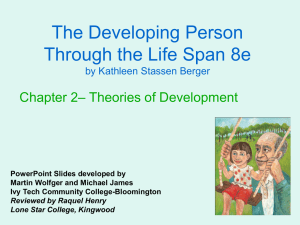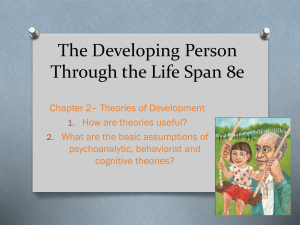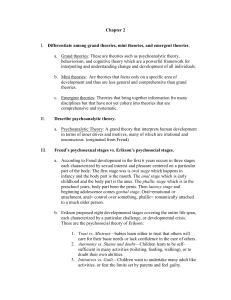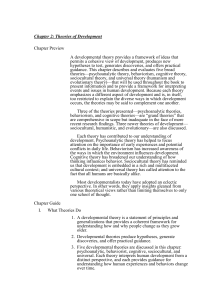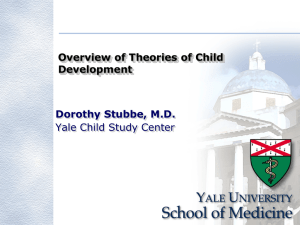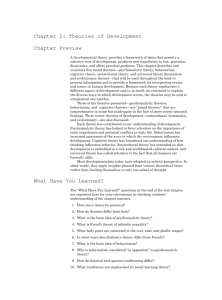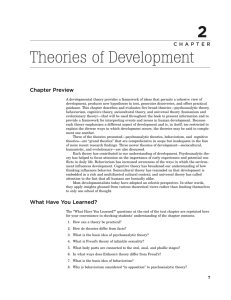Theories
advertisement
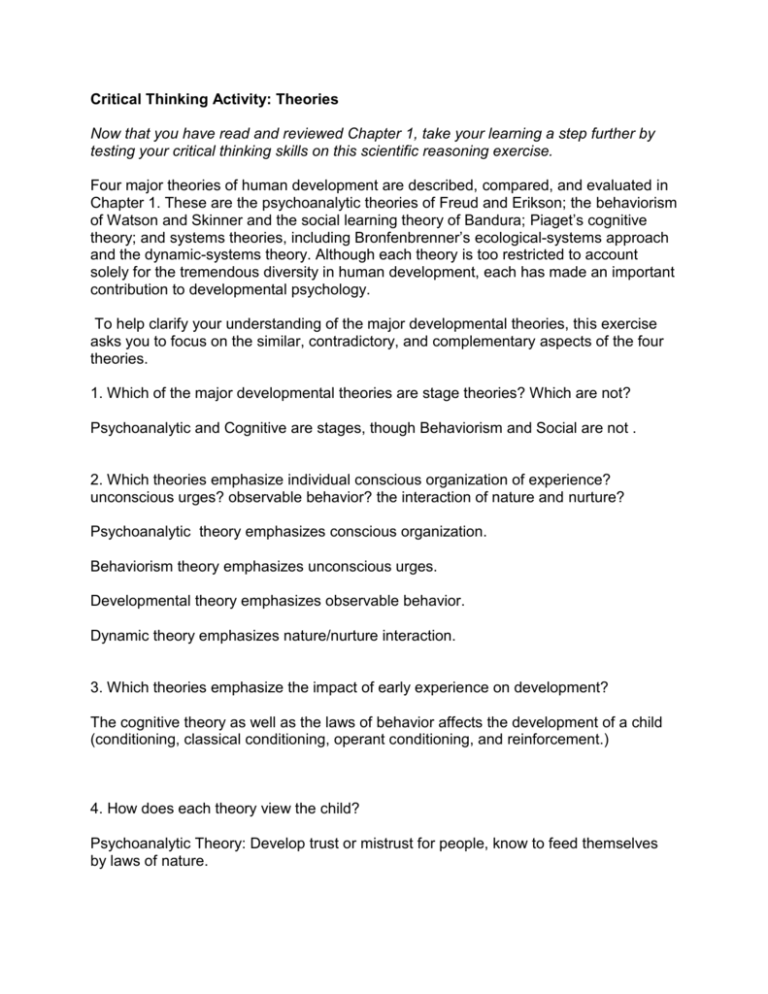
Critical Thinking Activity: Theories Now that you have read and reviewed Chapter 1, take your learning a step further by testing your critical thinking skills on this scientific reasoning exercise. Four major theories of human development are described, compared, and evaluated in Chapter 1. These are the psychoanalytic theories of Freud and Erikson; the behaviorism of Watson and Skinner and the social learning theory of Bandura; Piaget’s cognitive theory; and systems theories, including Bronfenbrenner’s ecological-systems approach and the dynamic-systems theory. Although each theory is too restricted to account solely for the tremendous diversity in human development, each has made an important contribution to developmental psychology. To help clarify your understanding of the major developmental theories, this exercise asks you to focus on the similar, contradictory, and complementary aspects of the four theories. 1. Which of the major developmental theories are stage theories? Which are not? Psychoanalytic and Cognitive are stages, though Behaviorism and Social are not . 2. Which theories emphasize individual conscious organization of experience? unconscious urges? observable behavior? the interaction of nature and nurture? Psychoanalytic theory emphasizes conscious organization. Behaviorism theory emphasizes unconscious urges. Developmental theory emphasizes observable behavior. Dynamic theory emphasizes nature/nurture interaction. 3. Which theories emphasize the impact of early experience on development? The cognitive theory as well as the laws of behavior affects the development of a child (conditioning, classical conditioning, operant conditioning, and reinforcement.) 4. How does each theory view the child? Psychoanalytic Theory: Develop trust or mistrust for people, know to feed themselves by laws of nature. Behaviorism theory: Holds the condition as crucial, early habits and patterns can be unlearned or reversed. Developmental theory: Child is raw material for foundation of human growth that pieces itself together. Dynamic theory: Impacts the child’s mold as a person, nature and nurture. Without both the child will struggle to survive. Cognitive Theory: Shaping of the child’s attitude, beliefs, and behaviors. (Child is a blank slate) 5. How do the theories view adult development? Psychoanalytic theory: Adults should be able to love and work, should have contributed to the next generation of children. Behaviorism theory: Adults have already observed others as role models and replicated them as a conditioned practice. They become the role models at this time. Developmental theory: Adults are the nearly finished house being built for decades. Dynamic theory: Continues to change but relies on past experiences to progress. Cognitive theory: Adults can be logical and reason analytically not just emotionally. Have learned from their past. (Experienced) 6. Do the theories use the same methodology? How does each make use of the scientific method? Psychoanalytical and Cognitive theories do not follow the standard process of methodology, as it is a theory that we are not able to practice to interpret into reality. Behaviorism theory also does not use the same methodology. (We will not able to tap into someone’s unconscious mind to study it.) Each thought was formed into a question which began with a theory, which turned into a hypothesis that was tested (other than Psychoanalytic, Cognitive and Behaviorism theories). Conclusions were drawn in, and data was collected to publish. This is what we consider a scientific method of forming hypothesis.
